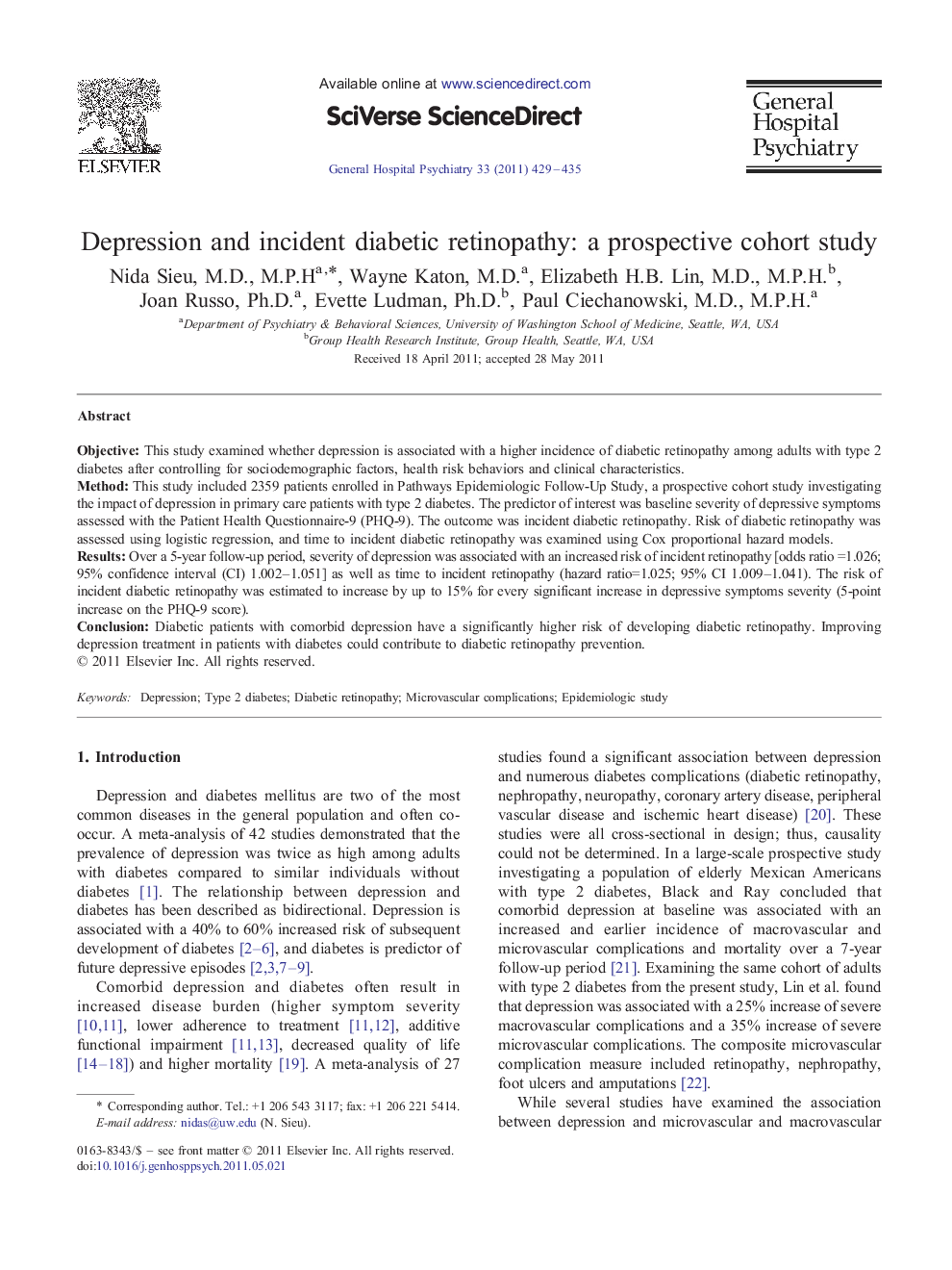| Article ID | Journal | Published Year | Pages | File Type |
|---|---|---|---|---|
| 3237814 | General Hospital Psychiatry | 2011 | 7 Pages |
ObjectiveThis study examined whether depression is associated with a higher incidence of diabetic retinopathy among adults with type 2 diabetes after controlling for sociodemographic factors, health risk behaviors and clinical characteristics.MethodThis study included 2359 patients enrolled in Pathways Epidemiologic Follow-Up Study, a prospective cohort study investigating the impact of depression in primary care patients with type 2 diabetes. The predictor of interest was baseline severity of depressive symptoms assessed with the Patient Health Questionnaire-9 (PHQ-9). The outcome was incident diabetic retinopathy. Risk of diabetic retinopathy was assessed using logistic regression, and time to incident diabetic retinopathy was examined using Cox proportional hazard models.ResultsOver a 5-year follow-up period, severity of depression was associated with an increased risk of incident retinopathy [odds ratio =1.026; 95% confidence interval (CI) 1.002–1.051] as well as time to incident retinopathy (hazard ratio=1.025; 95% CI 1.009–1.041). The risk of incident diabetic retinopathy was estimated to increase by up to 15% for every significant increase in depressive symptoms severity (5-point increase on the PHQ-9 score).ConclusionDiabetic patients with comorbid depression have a significantly higher risk of developing diabetic retinopathy. Improving depression treatment in patients with diabetes could contribute to diabetic retinopathy prevention.
